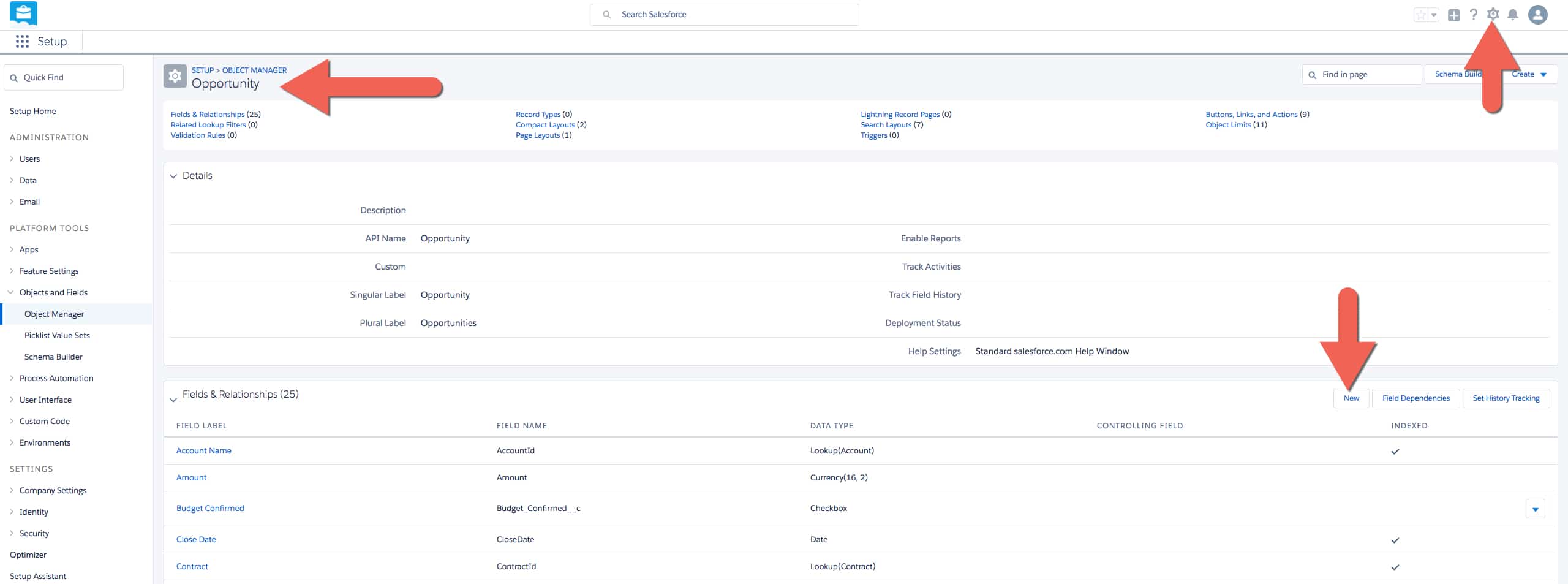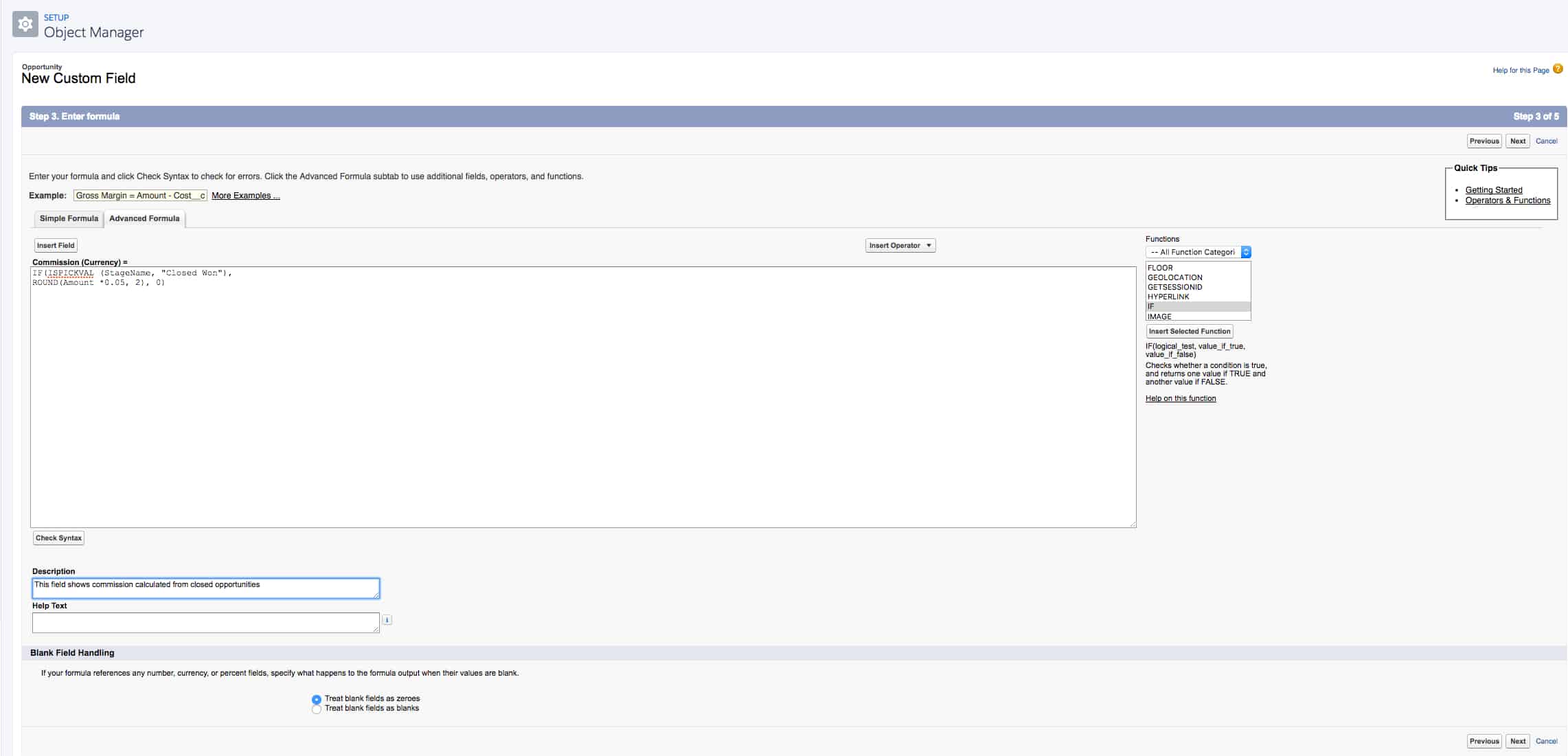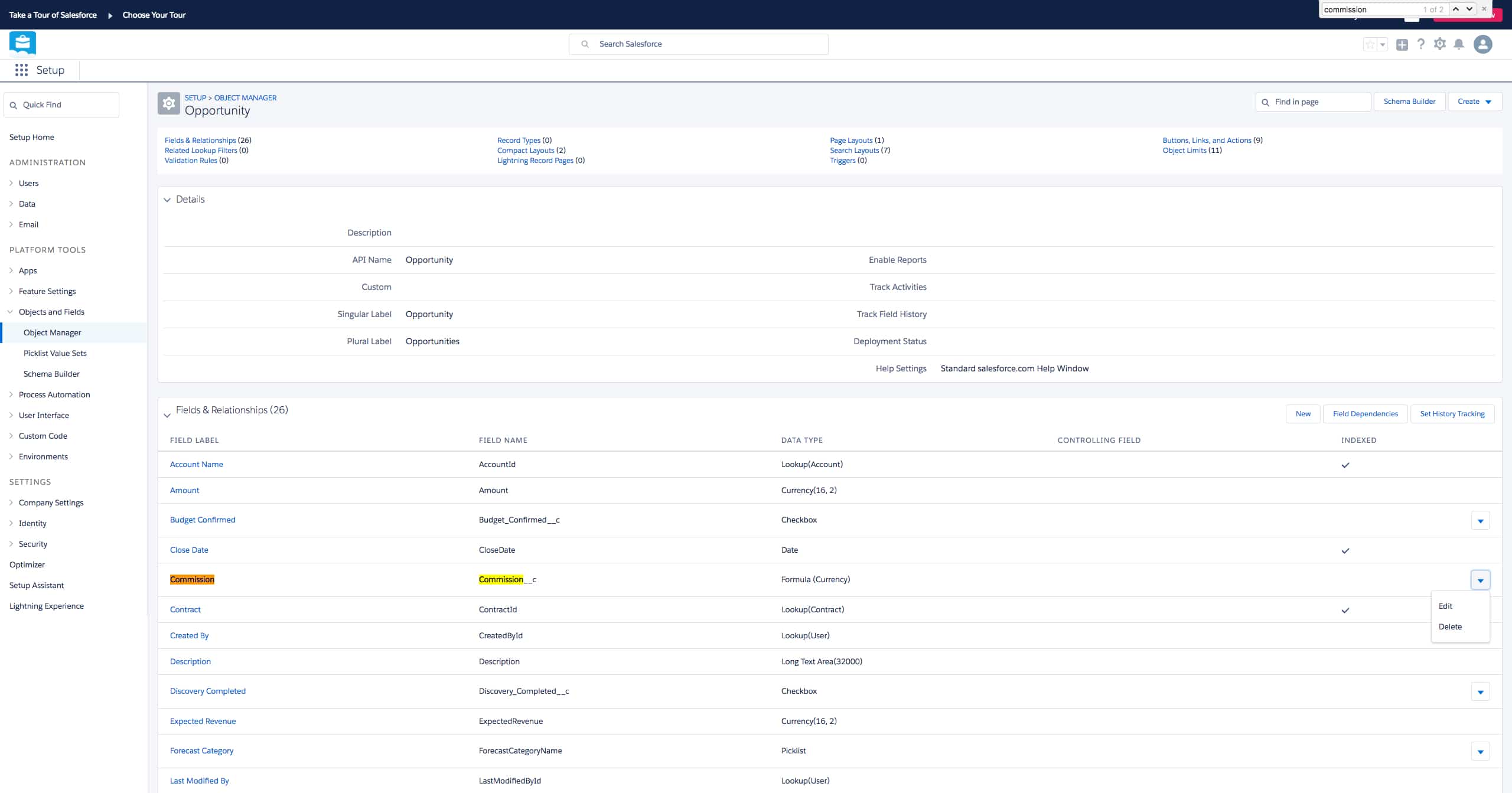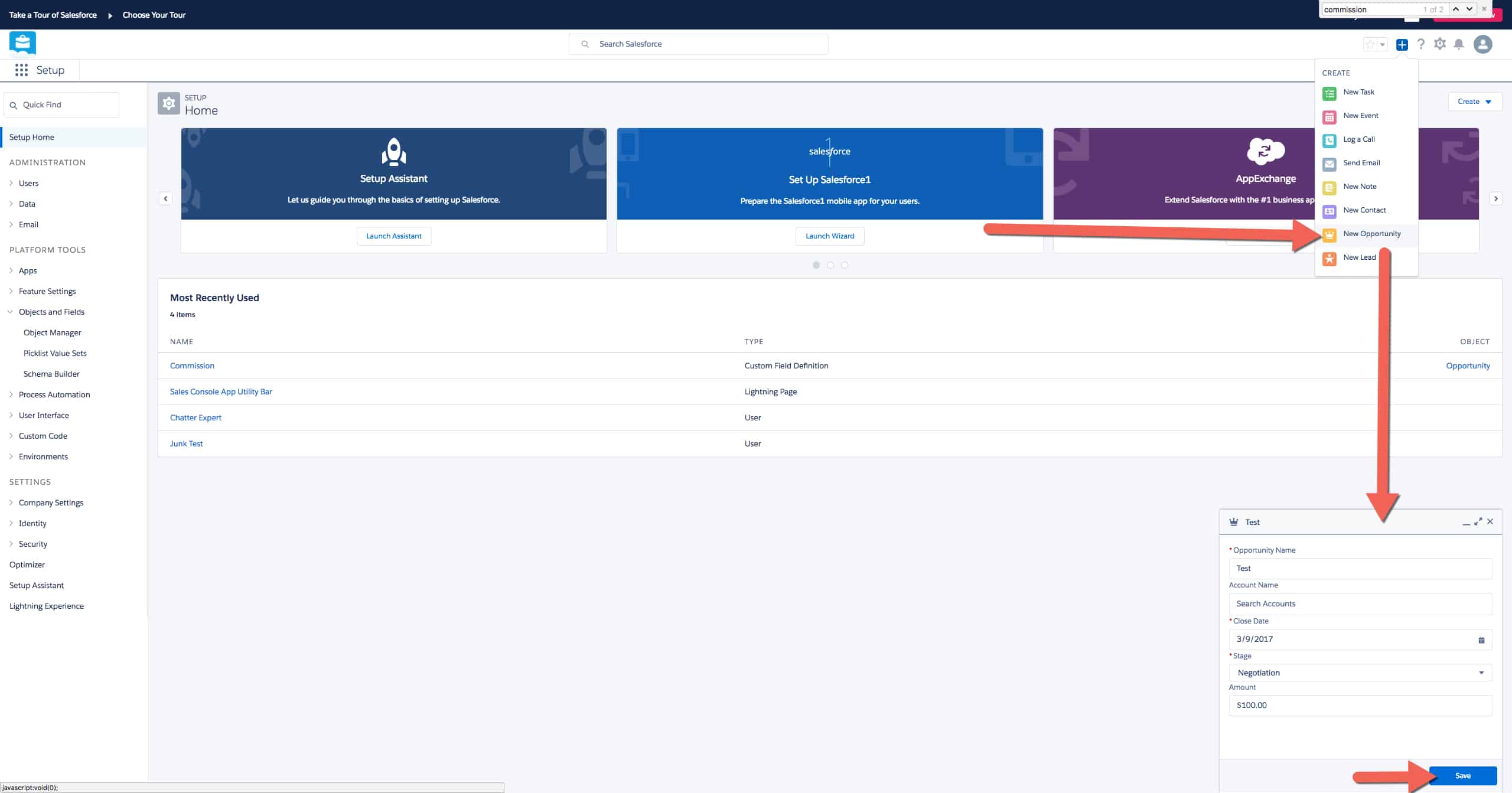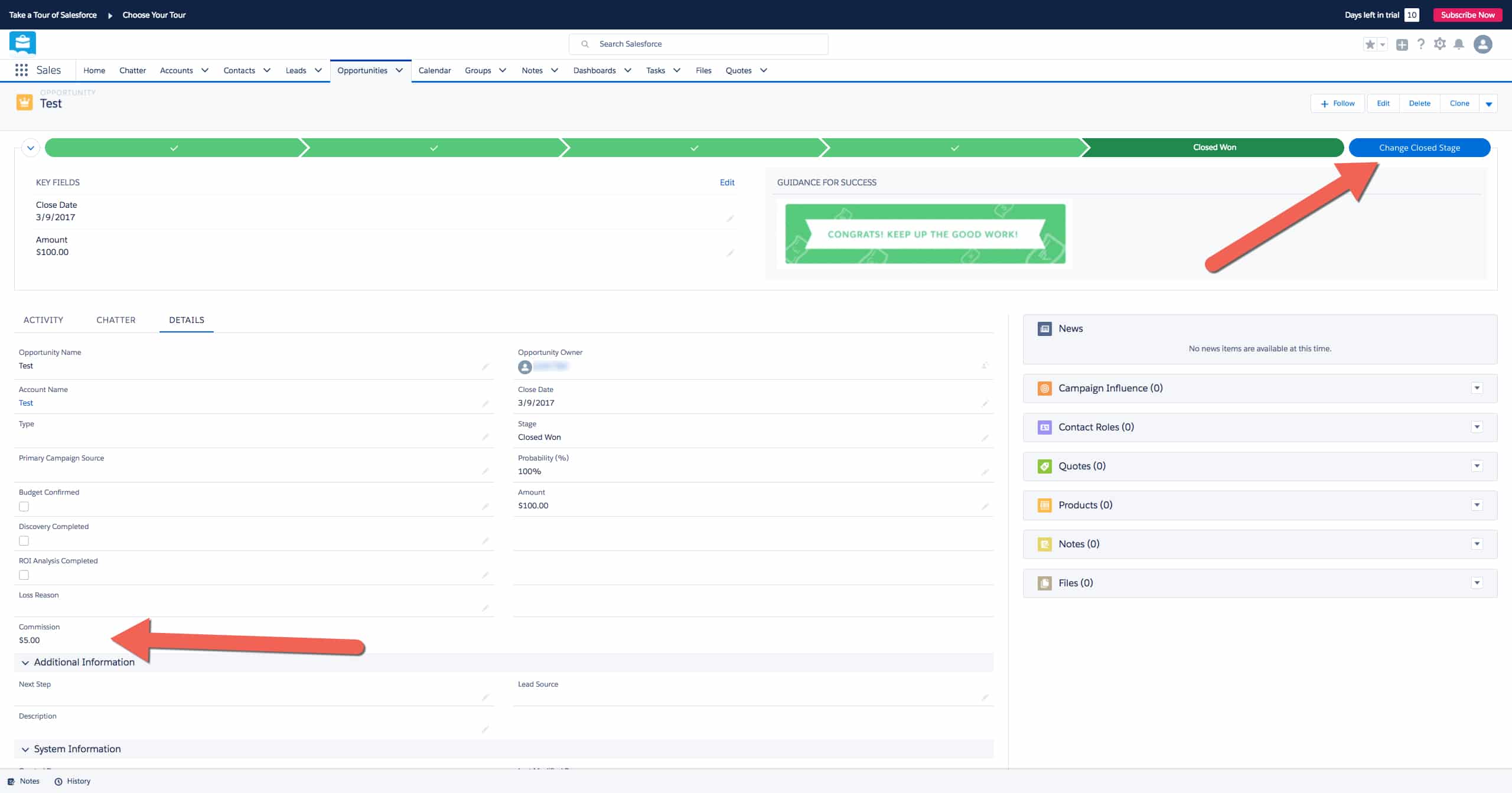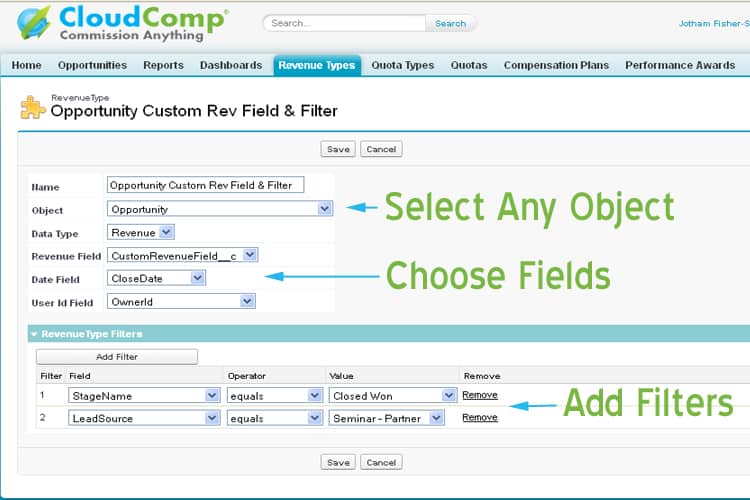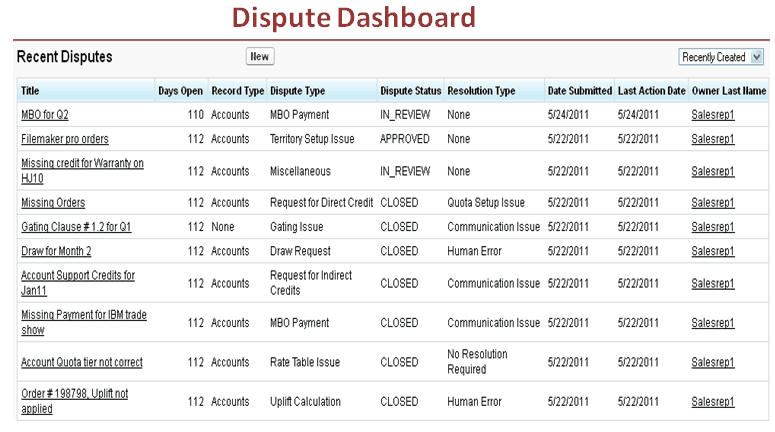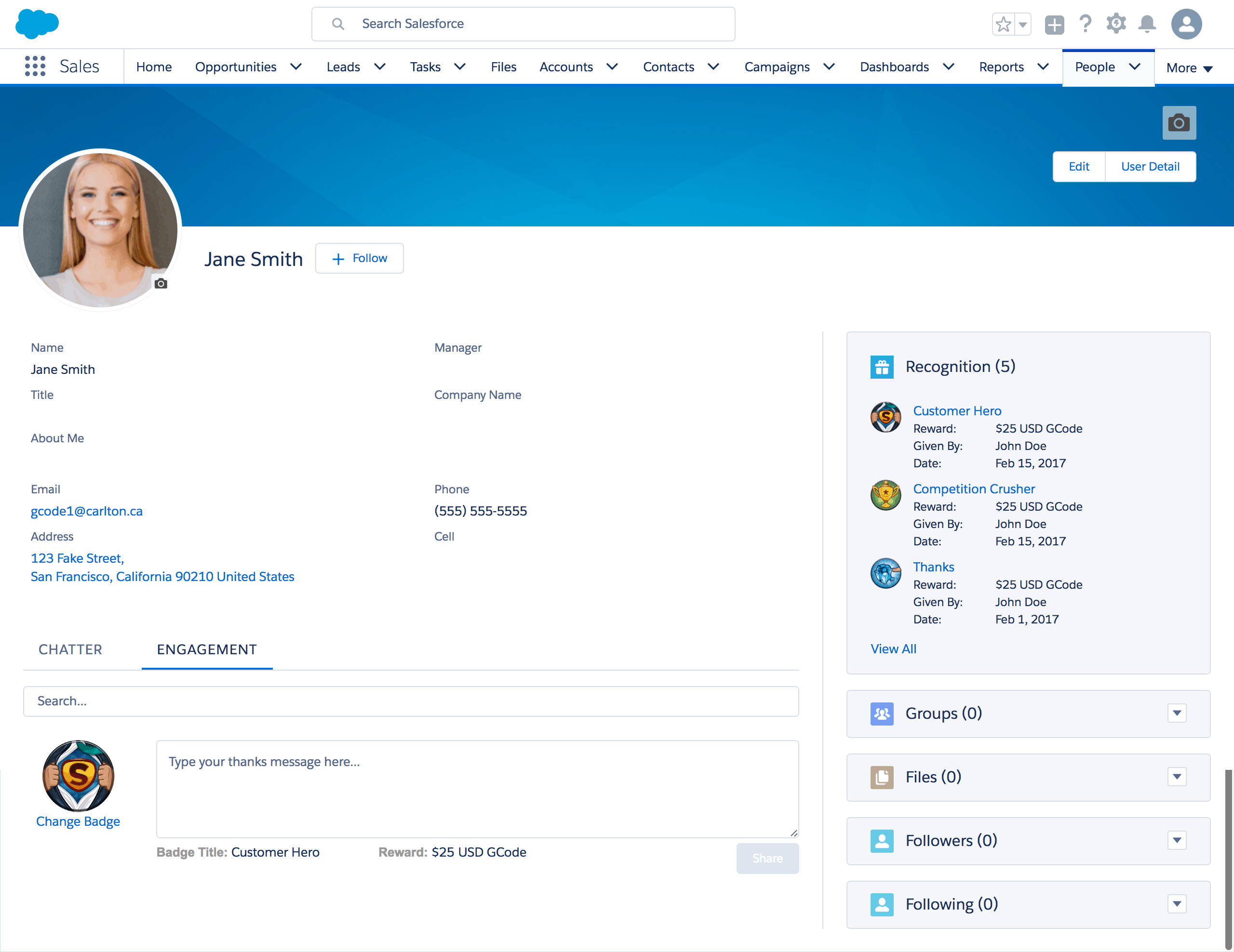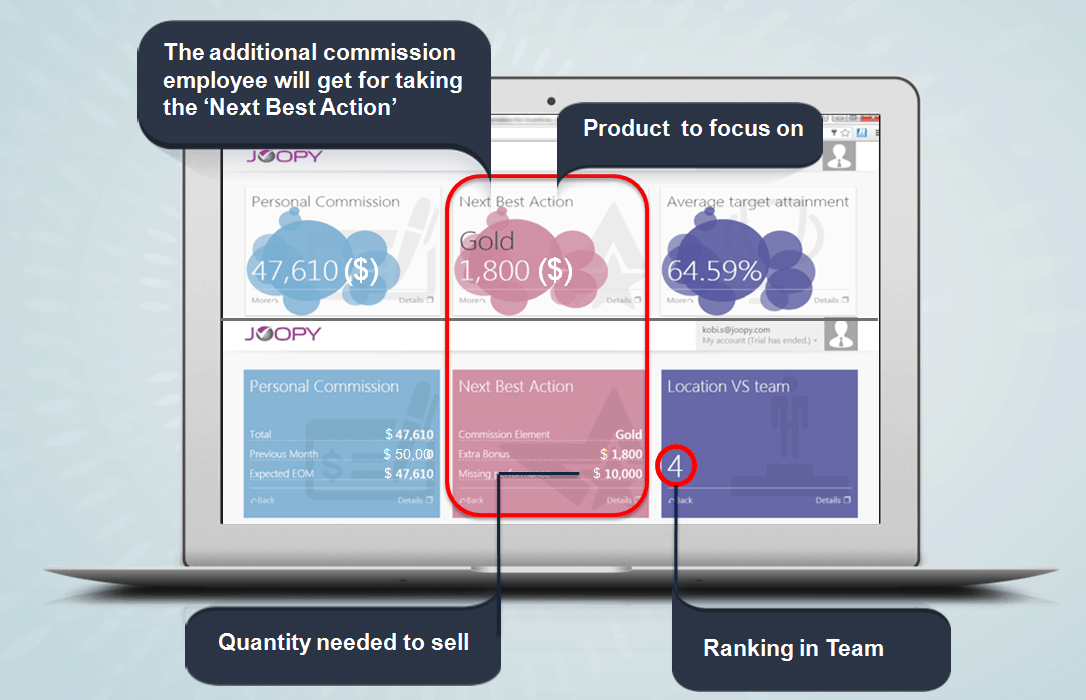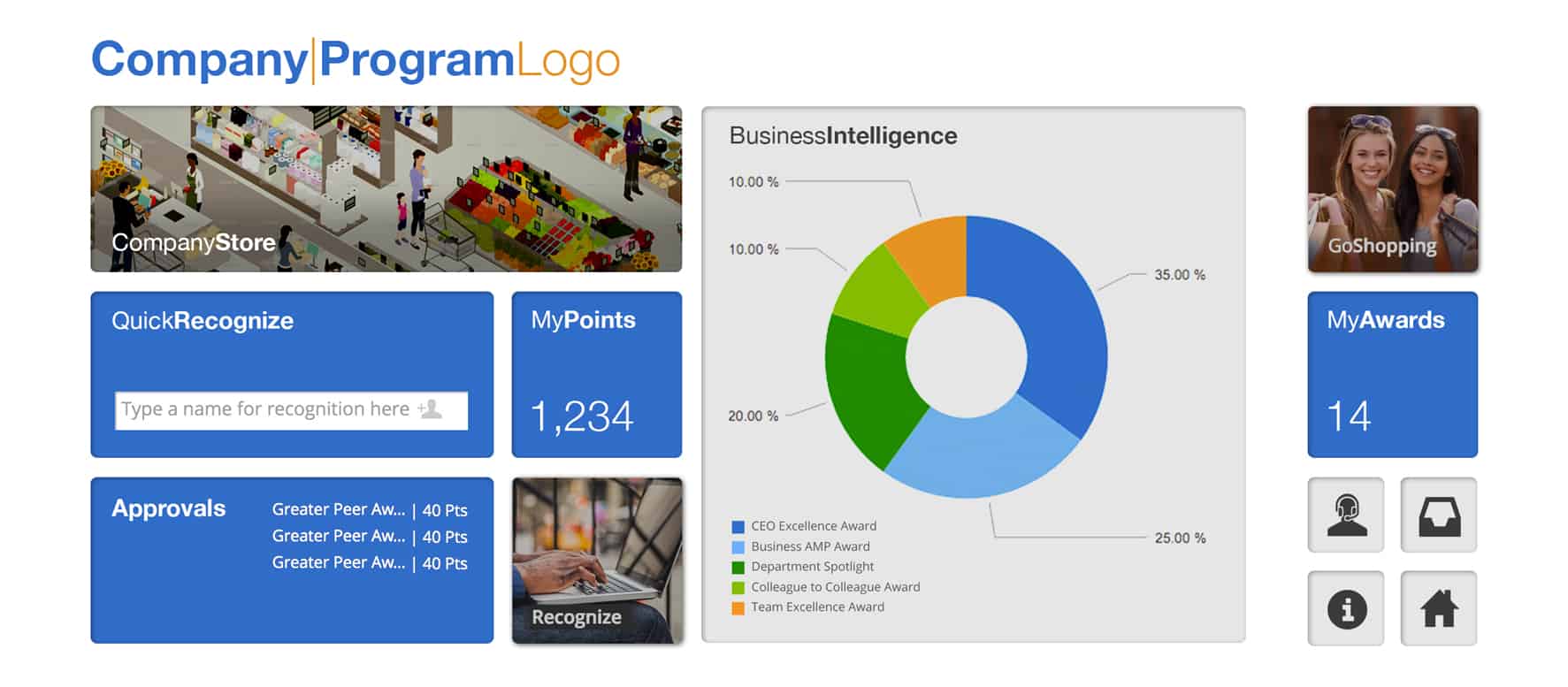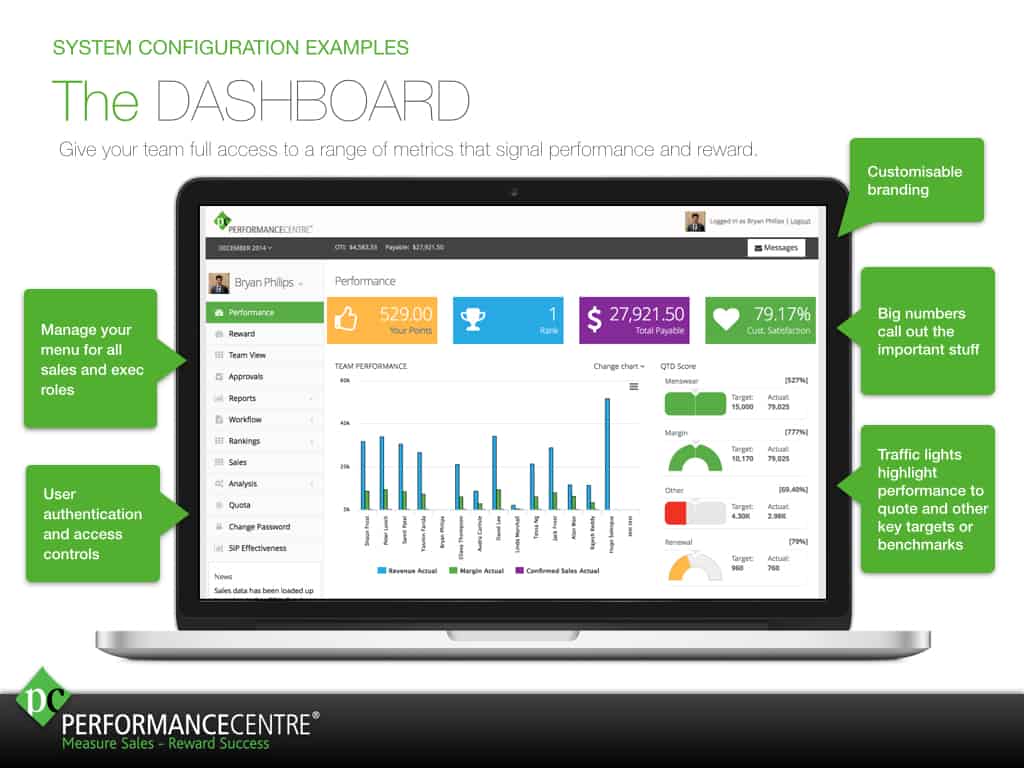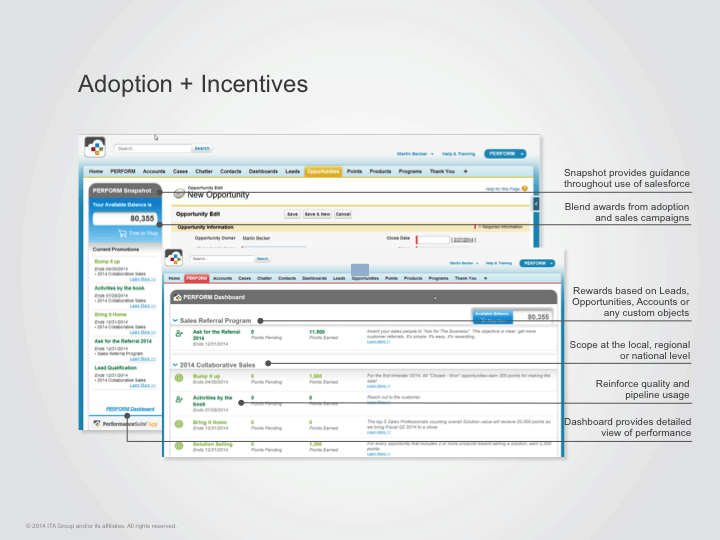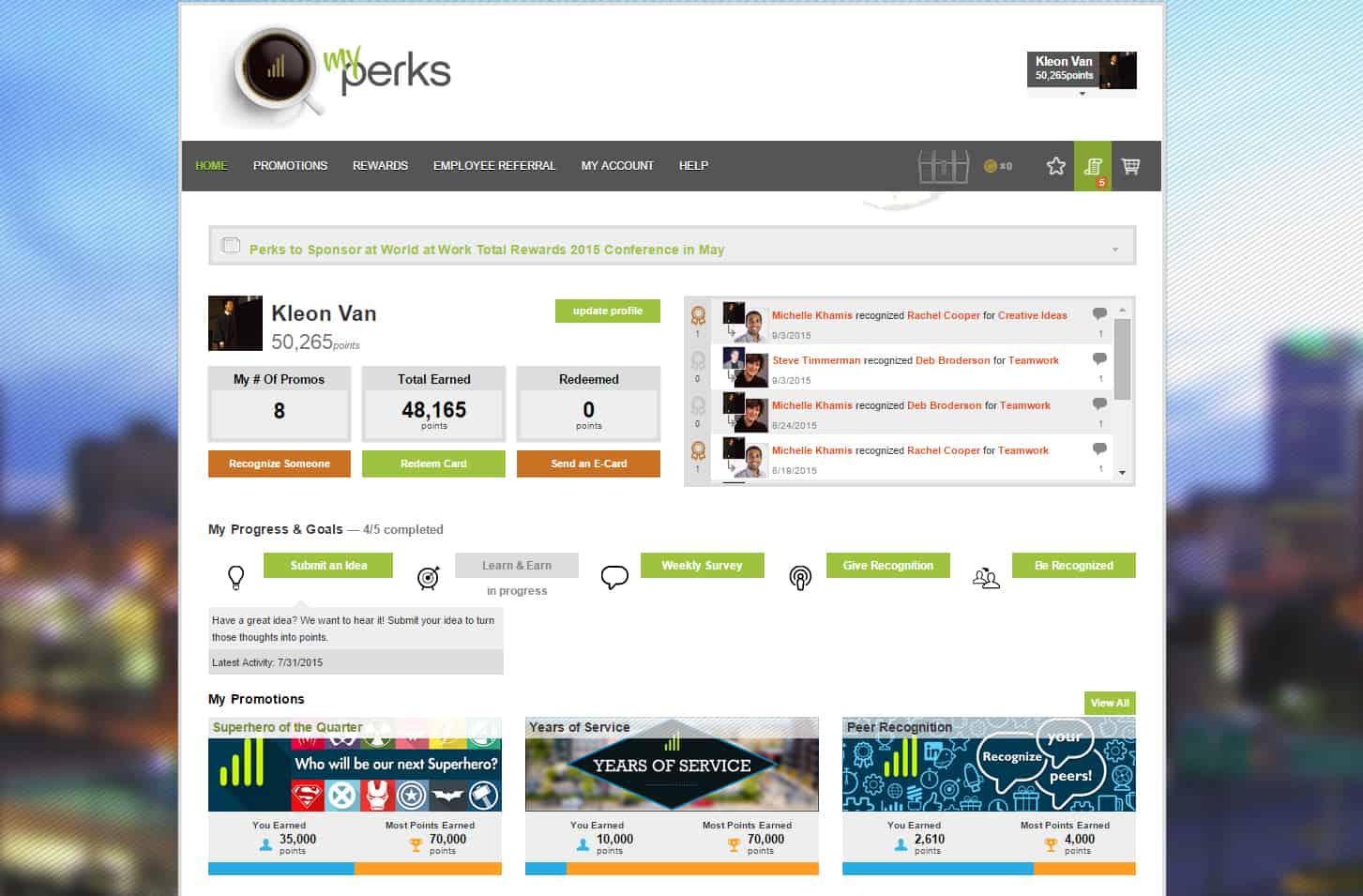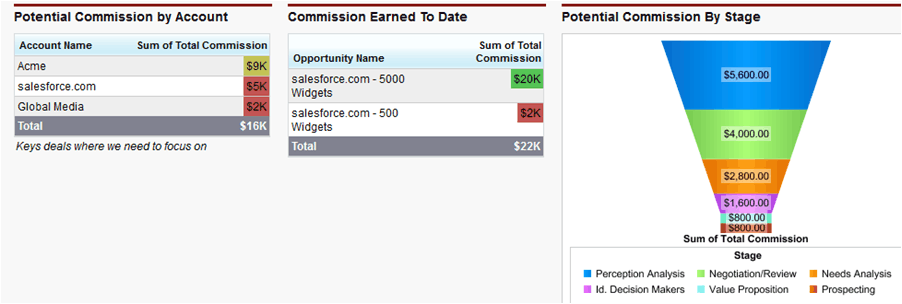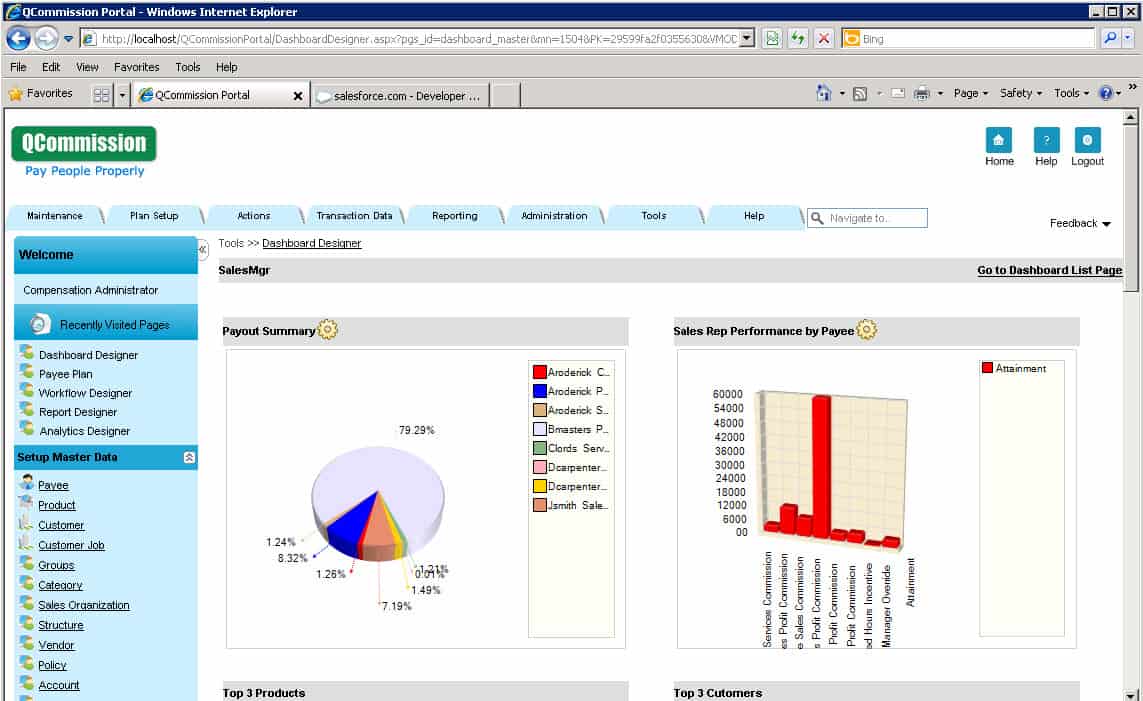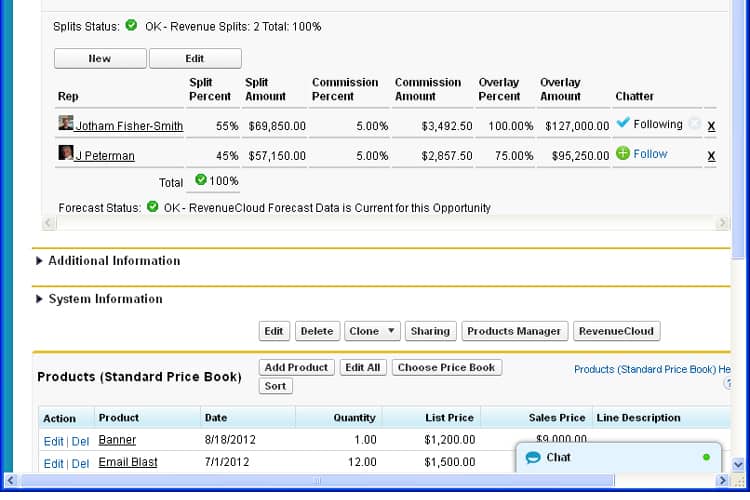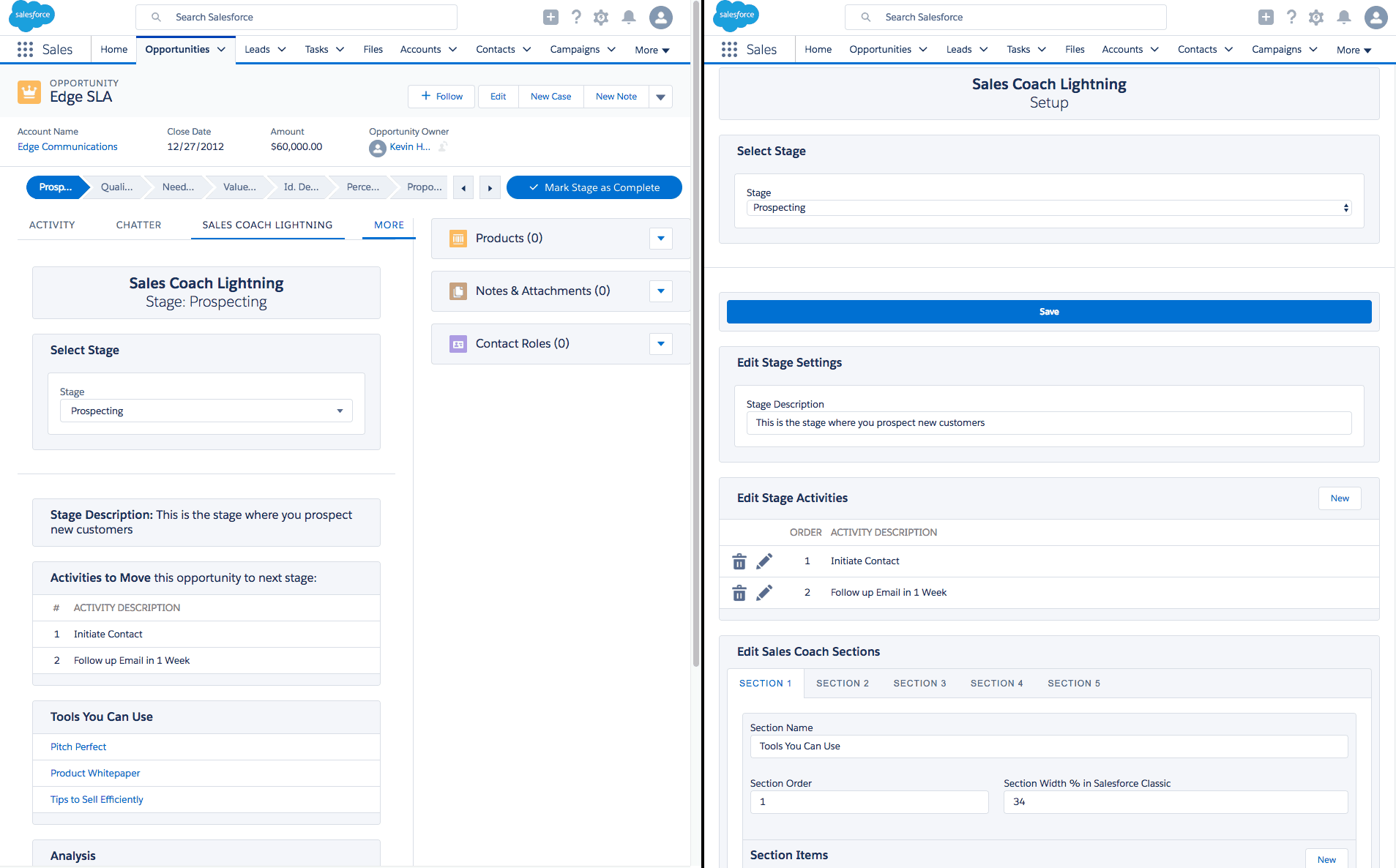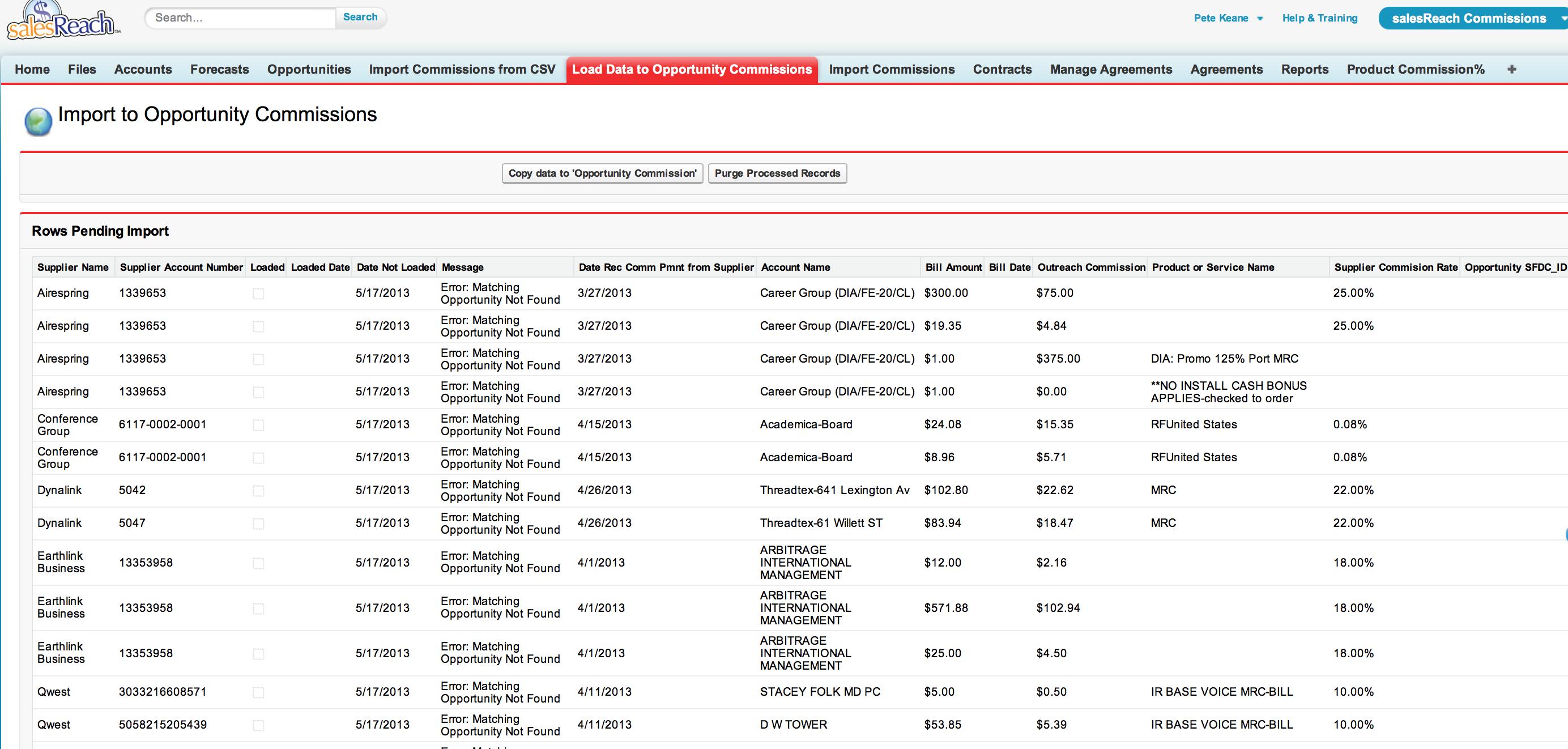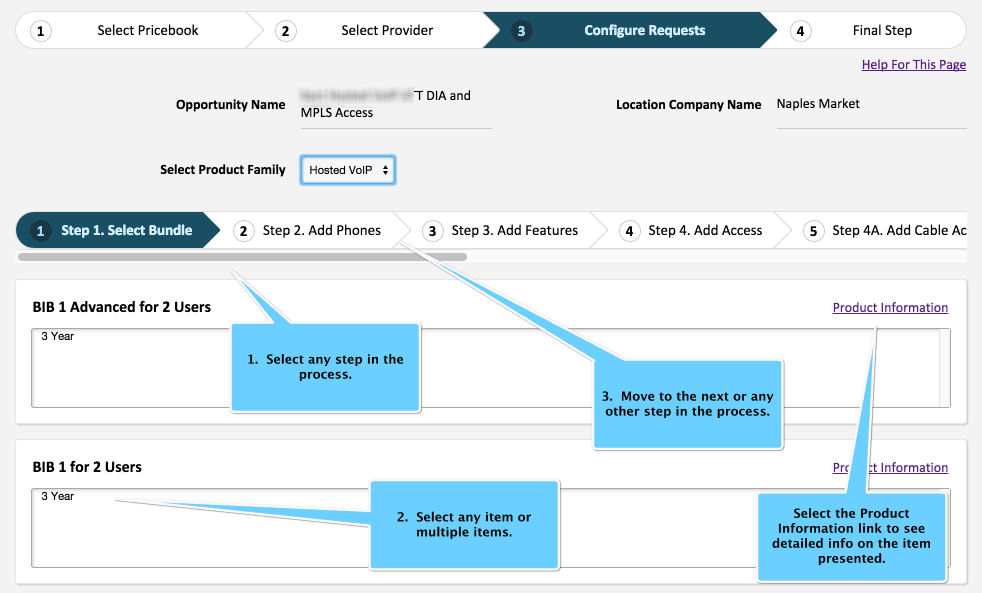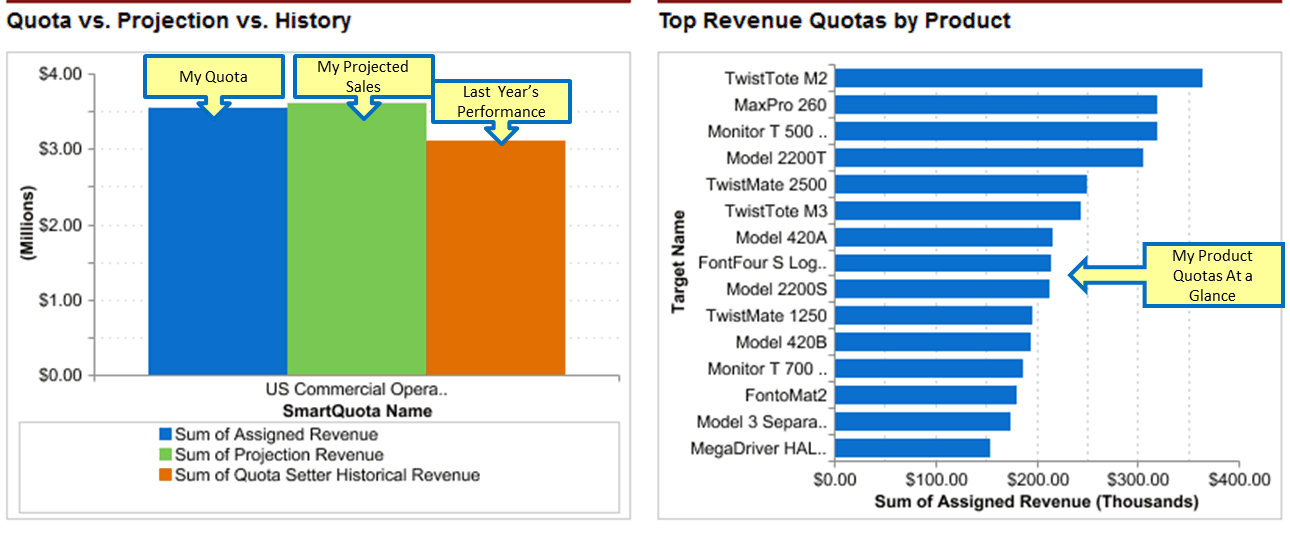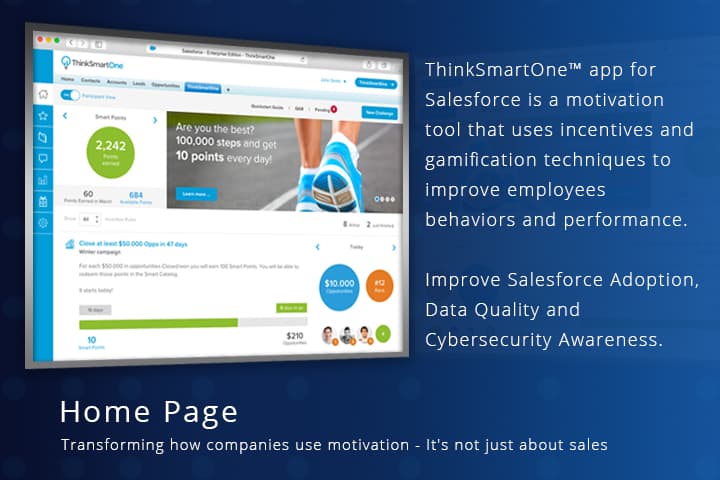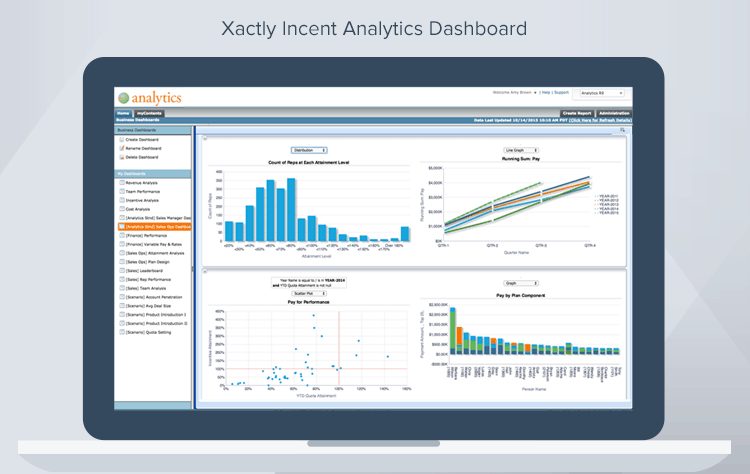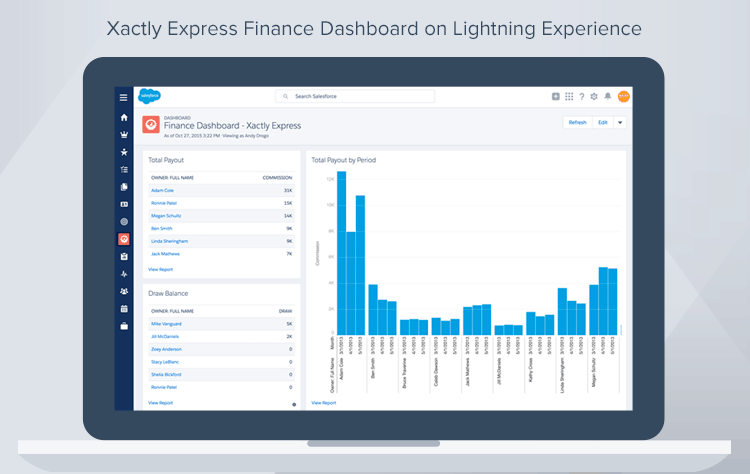Why Integrate Commission Tracking with Salesforce?
If you’ve ever worked as a commission salesperson (inside or outside), you know the stress caused by irregular paychecks. If you’re working in small-time sales like retail, there could simply be a slow month for foot traffic where none of your standbys buy anything. If you’re working in large-scale sales, it could be several months of working with one prospect trying to close a sale worth five figures to you.
When your day-to-day job is so difficult, there isn’t time for errors in commission calculation, waiting on recalculation, or wondering about the size of your paycheck. For many organizations, the sales team is the lifeblood that maintains the bottom line, so keeping them happy doing their job should be a priority.
In sales management, headaches are often caused by manually entering sales data. After that, they must calculate how the raw data is affected by discounts, bulk orders, and negotiations that were managed by the sales rep - not to mention the frequent questions from reps about size and time of payment of commissions, and their frustrations when having their territories changed.
On both sides of the equation, simplicity, automation, and reliability of commission tracking would save a lot of trouble. So why integrate it into Salesforce CRM? Because that’s where you’re already tracking everything else related to sales, from opportunities won and lost to the lead pipeline. By decreasing the complexity of your organization, you reduce the chance for errors and request response time (in both directions), and increase the likelihood of noticing and attending to every necessary task.
It may sound unlikely, but it can often be hard to get everyone on your sales team - especially top performers - to participate in the processes that management puts in place. Especially when it comes to imposing new processes, top performers will disregard anything that gets in the way of selling, causes confusion, or increases busywork (even with the promise of saving time down the road). Since they are profit centers, there’s little you do to incentivize them.
However, when you integrate commission tracking with the CRM that sales people already use, you significantly increase the chances of adoption. What’s more, by tying in financial systems that get people paid more quickly (such as Quickbooks), you’ll reduce paperwork and get people to the money faster, which is further motivation.
Designing a Compensation Plan with the Right Incentives
Rethinking how to integrate commission tracking with all your other SaaS-based processes also provides an opportunity to reexamine your commission and compensation structure as a whole. Here are the main types of plans where companies have found success, their pros and cons, and the situations where they work best.
100 Percent Salary
Though it is rare and would negate the need for commission-tracking, straight salary does have its place in sales. For the salesperson, the pro is a reliable paycheck that reduces stress that might lead to quitting. The cons are that there’s no reward for trying harder, and the possibilities are more limited. For the company, the pros are that compensation is a fixed expense and the employees are less likely to resort to moonlighting or bad practices to make quotas. However, the cons are that competition will be diminished, and output isn’t guaranteed to exceed the salary.
The 100 percent salary plan is best for situations where salespeople work in regions as teams and contribution among team members is expected to be equal, or where the teams are small and selling is only one of the many functions they serve.
Salary + Bonus
This is considered an extremely reliable pay structure for salespeople. The pro for them is that they get reliable income, with performance-based incentives at intervals. The con is that incentives are capped by the way that bonuses are calculated. The pro for companies is that they can cap compensation and direct salesperson behavior with the bonus structure. For example, salespeople could receive a bonus each quarter, driving performance that reflects well on financial reports. There’s no real con here.
This structure works best for companies with large salesforces and long sales cycles. Even with bonuses calculated in, each employee only costs so much, and they don’t worry about not getting any pay while still trying hard (at least at defined intervals).
Salary + Commission
This is one of the most common sales compensation plans. For salespeople, the pro is a reliable paycheck with unlimited extra earning potential. There’s no real drawback, though they may not feel some sales are worth it when receiving low commission. For companies, it helps reduce salesperson turnover, but it significantly complicates administration of compensation.
For situations with many months between sales and big-ticket items, high salary with low commission makes the most sense for employees, who can treat base pay as their main income and commission as their reason to perform. For situations with more frequent sales and smaller deals, low salary with high commission is better. Non-performing employees don’t cost the company too much, and top performers easily earn their keep.
100 Percent Commission
This kind of plan is common in retail and high-volume industries. Salespeople have no upper limit to their earnings, but absolutely no stability other than what they can provide themselves. Companies can manage costs by simply calculating a percentage of sales, but may experience high turnover and counterproductive aggression and competition among employees.
This structure is best for attracting top performers who like a challenge, and where talent pools are plentiful and sales are frequent, like with popular consumer products.
Draw Against Commission
This plan is similar to 100 percent commission, but differs in when the money leaves. At the start of a pay period, employees receive an advanced set amount of money called the “predetermined draw.” At the end of each pay period, the draw is deducted from a salesperson’s commission. They keep whatever is left over. For salespeople, this helps give them a living wage to work with between sales, but can result in stress from the debt-like situation. For companies, it provides employee motivation (think: “the carrot and the stick”), but also requires them to act as debt-collectors from their own employees.
This situation is good for developing new territories, and for longer sales cycles with high-priced items. Salespeople can keep going when a territory has yet to yield sales, and the company knows that it will make up its costs should the territory never result in sales.
Team-Based Variable Commission
In this plan, the rate of commission increases or decreases depending on whether teams’ sales goals have been beaten, and by how much. It’s similar to straight commission, but with a greater emphasis on teamwork: salespeople who work together can all enjoy greater pay. On the flip side, a weak performer drags everybody down. Companies can enjoy greater camaraderie among the salespeople, but may find that the “quantity over quality” attitude to meet goals leads to lower customer satisfaction.
This structure is best employed by a region with somewhat spread out individuals, so that they work together to bring the whole area together to meet their goals.
Territory Volume
This plan is like the team-based variable commission, except the pay is determined and split equally among each salesperson in a territory over longer periods of time. This lessens the individual salesperson drive, but increases cooperation and teamwork significantly.
This structure works best when sales territories have clear boundaries. This way, different teams aren’t competing for the same targets, and each territory provides enough revenue to support strong wages that get calculated from volume.
Residual Commission
This plan rewards a salesperson again and again for landing a big account, and pays them continuously as long as the account generates revenue for the company. The pro for salespeople is an incentive to chase and maintain long-term relationships with such clients, but the con is drastic decreases in compensation if a client is lost. For the company, it helps drive such behavior from higher-level sales team members while only functioning as a percentage cost of revenue.
This situation is best for client-services types of structures such as account managers, where their job is mainly to build relationships and keep clients happy. It helps to retain strong performers longer, too.
Profit Margin
This plan compensates employees based on how well the company is performing. Salespeople may feel more motivated to help the company as a whole in their everyday life and participate in company activities, rather than focusing on individual goals. The con is that they must be able to support themselves during lean periods.
The profit margin pay structure is beneficial for startups with limited liquidity, which can support enthusiastic employees with long-term incentives like stock shares, flextime, and other benefits while the company is being built.
Step-by-Step Guide to Simple Commission Tracking in Salesforce
Though it is not built perfectly for the purpose, Salesforce can be used to track commission more easily than you might think. Taking the time to incorporate this feature into your process can save you hours of manual commission calculation efforts per pay period, prevent errors in exporting, migrating, and importing data, and get your hard-working sales team paid faster. For this example, we’re going to use a scenario where the commission is 5 percent.
Here’s how to do it using Salesforce Formula Fields:
Step 1: Create Your Commission Field
Go to Setup, find Opportunities, and click New under the Field Division.
Select Formula then click New.
Step 2: Build Your Field’s Formula
Choose Currency under Formula Return Type, and give it the field label Commission. Leave the decimal places at 2, since this will be a dollar and cent amount. Click Next.
Now you’re in your Formula Builder. Click the Advanced Formula tab, then write out the following formula:
IF(ISPICKVAL (StageName, "Closed Won"),
ROUND(Amount *0.05, 2), 0)
This will show the field amount as 5% of the Amount field of any Opportunity which has reached stage Closed/Won, in currency format. If the Opportunity is Open or Closed/Lost, then it will return as a 0. Test your formula to make sure there are no syntax errors.
Enter a useful description so that others know what this field is doing, leave the Blank Field Handling marked for Treat blanks as zeroes, and then click Next.
Step 3: Set Permissions
Choose which types of users can view the commission field. By default, custom-created fields are visible but uneditable to all (Read Only). Choose permissions based on your organization’s culture, but never assign individual reps edit permissions. In this example, all are being left at default. Click Next.
Step 4: Choose a Layout
Decide which layouts you want this field to appear on. In some cases, there might be more than one, but in this case, there’s just the Opportunity Page Layout. Make sure it is checked, otherwise the commission field won’t appear. Click Save.
Step 5: Review Opportunity Settings
Now that you’ve created your custom field, review it to make sure everything is in place. You can always edit or delete any custom fields you’ve made. Verify that it is in its right place in the layout, alphabetically.
Step 6: Test Your Field
The final step for any change in Salesforce is testing. On the top toolbar, click +, select New Opportunity, then fill in a “Test” opportunity set to close today, for the Account “Test,” worth an amount of $100. Click Save.
Now go to Opportunity, and change the stage to Closed Won. In the Details tab, you’ll see that your commission has changed to $5.00, which is five percent of the Opportunity Amount $100. Congratulations, you’ve successfully created a commission tracking field that will update in real time.
This is a fairly simple commission tracking formula - there are more complex formulas you can try now that you’ve got the basics. For advanced ways to track commission without too many headaches, explore below.
Third-Party Apps for Commission Tracking in Salesforce
Tinkering with Process Builder and custom objects all day isn’t the only way to track commissions in Salesforce - you can also check out their vast library of third-party add-ons and integrations. Here’s some of the best commission tracking apps (listed in alphabetical order) that the AppExchange has to offer:
Price: Contact them for details
Overview: CallidusCloud Commissions allows you to create custom drag-and-drop Sales Performance dashboards for salespeople. They include the ability to create point and badge-based metagames to incentivize additional salesperson behavior like follow-ups and spur competition. Salespeople can see all their commission information updated in real-time, which limits the need for constant information requests between them and managers.
Notable Extras: Optimized for Salesforce1 Mobile, and has no assets counted against Salesforce org limits
Requirements: Salesforce Enterprise edition or higher
Price: $34 USD per user, per month
Overview: CloudComp lets you manage multi-tier commissions and compensation plans using data from any standard or custom object. It even allows multi-currency commissions, and is one of the most flexible solutions on this list.
Notable Extras: Optimized for Salesforce1 Mobile, has no assets counted against Salesforce org limits, and runs natively in Salesforce cloud with enhanced security
Requirements: Salesforce Enterprise edition or higher
Dispute Manager (Sales Commissions)
Price: Free
Overview: Rather than track commissions, this platform helps with commission dispute resolution. It can call on other third-party commission apps featured on this list, along with any Salesforce field, and helps manage all potential compensation problems without leaving Salesforce. It has a dashboard for all dispute tickets, offers transparency to both sides of the arbitration, and has automated workflow capabilities.
Notable Extras: This doesn’t count against your Salesforce org limits
Requirements: Salesforce Enterprise edition or higher
Price: Contact for pricing
Overview: With territory, quota, and dispute management, along with a DocuSign integration and reporting dashboards, Fusion SPM positions itself as a full-stack incentive and commissions platform.
Notable Extras: Optimized for Salesforce1 Mobile, and has no assets counted against Salesforce org limits
Requirements: Salesforce Enterprise edition or higher
Price: Contact for pricing
Overview: GCodes is a virtual gift codes rewards platform that you can use as additional compensation and incentives to drive sales team and customer behavior. You can also use the gift codes to build loyalty and increase research and survey participation.
Notable Extras: Fully integrated into Salesforce Lightning Experience, and has no assets counted against Salesforce org limits
Requirements: Salesforce Group edition or higher
Price: Contact for pricing
Overview: This compensation calculation app lets sales managers build custom dashboards on the fly while letting sales reps view their real-time commission data and build what-if scenarios to determine potential future compensation.
Notable Extras: None
Requirements: Salesforce Group edition or higher
Price: Starting at $30 USD per user, per month
Overview: Incentives SPM helps salespeople understand their compensation and their “Next Best Action” so they can prioritize their activities to maximize commissions. They can see how much they need to sell, what products they should prioritize, and get a comparison to teammates for that extra competitive spirit. It also has a mobile app version of its web portal, separate from Salesforce1.
Notable Extras: None
Requirements: Salesforce Group edition or higher
Price: Contact for pricing
Overview: MaestroSF helps drive sales team behaviors that drive results using proper incentives, points, awards, and discounted goods. It also provides tools on the manager end to identify and develop high-potential sales talent.
Notable Extras: No assets counted against Salesforce org limits, and integrates with Chatter
Requirements: Salesforce Enterprise edition or higher
Price: Free
Overview: This is a simple commissions calculator that tracks when an Opportunity reaches the Closed/Won stage, and then calculates commission for the reps and their managers related to the sale in multi-tier hierarchies. It doesn’t offer a lot of additional, fancy functionality, but it lays atop the Salesforce platform nicely and gets the job done.
Notable Extras: No assets counted against Salesforce org limits
Requirements: Salesforce Enterprise edition or higher
Price: $1000 covers subscription, training, and installation
Overview: Nirvaha Commissions helps calculate simple and complex compensation for salespeople. It can calculate these figures according to a rep’s plan, bring in transactions and customer payments from financial software, and send statements from the app via email, so nothing that leaves the system has to be reentered.
Notable Extras: No assets counted against Salesforce org limits, and runs natively in Salesforce cloud
Requirements: Salesforce Professional edition or higher
Nirvaha Simple Commission
Price: Free
Overview: As the name implies, this app runs simple commissions on revenue, gross margin, per unit, and bonuses. It supports multiple commission payees per opportunity, and rates vary by item. As a simple free add-on, it gets the job done.
Notable Extras: Runs natively in Salesforce cloud
Requirements: Salesforce Professional edition or higher
Price: Free
Overview: Optymyze Sales Performance provides tools that help you get insight into your opportunity data, improve how you manage compensation plans, and arm sales reps and managers with the knowledge to improve their performance.
Notable Extras: No assets counted against Salesforce org limits
Requirements: Salesforce Group edition or higher
Price: Free
Overview: This free app is all about managing your incentives, measuring sales, and rewarding successful salespeople. It helps to reduce calculation errors, and gives salespeople an easy-to-understand dashboard that lets them track sales, commissions, and other incentives all in one place.
Notable Extras: No assets counted against Salesforce org limits
Requirements: Salesforce Group edition or higher
Price: Contact for pricing
Overview: PerformanceSuite claims to boost salespeople adoption of CRM systems while cutting the work of admins in half. It can recognize multiple reps for lead generation, order fulfilment, and build non-cash incentives, merchandise and rewards programs.
Notable Extras: No assets counted against Salesforce org limits
Requirements: Salesforce Enterprise edition or higher
Price: Contact for pricing
Overview: PerksPlus helps drive recognition and motivation to sales reps through points and rewards programs. It also has tools to track performance trends “across cubicles or across countries.”
Notable Extras: None
Requirements: Salesforce Group edition or higher
Price: $1.99 per month
Overview: This app shows projected commissions during each stage in the pipeline for every opportunity. It’s primarily focused on sales reps calculating their own compensation, while helping them focus on their best opportunities.
Notable Extras: No assets counted against Salesforce org limits
Requirements: Salesforce Group edition or higher
Price: $13 per month per payee or user
Overview: This robust application helps sales organizations calculate, track, and correct commissions. It can also handle flat rates, tiered rates, goal-threshold based rates, bonuses and other incentives, so it can accommodate teams that operate in different ways, or those who are experimenting with their compensation structure. It’s created with financial software like Quickbooks in mind, and complies with Sarbanes-Oxley regulations.
Notable Extras: No assets counted against Salesforce org limits
Requirements: Salesforce Professional edition or higher
Price: Annual subscription is $12 per month, per user with minimum five users
Overview: This app goes beyond CloudComp with enhanced features, allowing Opportunity, Product and Revenue Schedule splits between sales reps. It can calculate commissions for all types of Salesforce Opportunities, and integrates with quoting apps, too. Finally, it can perform advanced currency management with dated exchange rates to improve projection accuracy. This is an app for organizations that need to run complex financial calculations, especially in the global market.
Notable Extras: No assets counted against Salesforce org limits, and runs natively in Salesforce cloud
Requirements: Salesforce Professional edition or higher
Price: Free
Overview: This is a first-party “Salesforce Labs” extension that helps visualize sales activities and build reports, comparing a rep’s activity rates and types against the Opportunities currently (or potentially) assigned to them. It serves as a dashboard, helping team selling organizations keep informed and operate as one unit.
Notable Extras: Fully integrated into Salesforce Lightning Experience
Requirements: Salesforce Professional edition or higher
Price: Free
Overview: This is a first-party “Salesforce Labs” extension that helps sales reps sell more consistently across an organization by offering all the tools they need in one spot. It guides reps’ activities, makes suggestions, and provides useful content based on the stage of their current Opportunities. Other teams can also weigh in and use the tool to suggest activities to reps, so your whole organization is synced up.
Notable Extras: Fully integrated into Salesforce Lightning Experience
Requirements: Salesforce Enterprise edition or higher
SalesReach Enterprise Commission Management
Price: States free, but informs you to contact sales for pricing
Overview: SalesReach’s commission solution is highly flexible, allowing users to connect compensation elements to any Salesforce object they want. It can handle calculations, processing, reporting, and payments of any sort, whether residual, one-time, or split between multiple reps. It’s also compliant with most security protocols.
Notable Extras: No assets counted against Salesforce org limits
Requirements: Salesforce Group edition or higher
Price: Variable - $1000 set up with $250 per month after
Overview: This SalesReach product handles commission management along with CSPQ (Configure, Source, Price, Quote) creation. It helps you solve all your finance-based issues and integrate them into Salesforce to gain full visibility into solving and tracking them. Their setup fee includes data migration and legacy data import, with help from their implementation team.
Notable Extras: No assets counted against Salesforce org limits
Requirements: Salesforce Enterprise edition or higher
Price: Contact for pricing
Overview: This is a quota-setting app that helps lend transparency to the process by bringing all stakeholders into one platform. It’s built to look just like Salesforce so it feels like a natural extension of the program.
Notable Extras: No assets counted against Salesforce org limits
Requirements: Salesforce Professional edition or higher
Price: Contact for pricing
Overview: Sycamore is a flexible commission management app that lives natively in the Salesforce platform. It allows you to import commission data from multiple sources, calculate pay, create statements, and then export them directly to accounting apps like Quickbooks. It’s designed with the financial services industry in mind, but can adapt to other businesses as well.
Notable Extras: No assets counted against Salesforce org limits
Requirements: Salesforce Enterprise edition or higher
Price: Starting at $20 USD per user, per month
Overview: ThinkSmartOne is a platform designed to “improve Salesforce adoption with incentives,” as well as improve sales. It uses gamification and monitoring to both improve and track behavior, with the goal of training salespeople a little each day. It also includes compensation features.
Notable Extras: No assets counted against Salesforce org limits
Requirements: Salesforce Professional edition or higher
Price: Contact for pricing
Overview: This app is built to automate commission tracking systems, motivate salespeople to enter better data and handle more useful sales activities, and optimize incentives packages towards the true, top performers in the company. It’s a leading solution for mid- to large-sized businesses.
Notable Extras: Fully integrated into Salesforce Lightning Experience, has no assets counted against Salesforce org limits, and optimized for Salesforce1 Mobile
Requirements: Salesforce Professional edition or higher
Price: Contact them for pricing
Overview: This is Xactly built for the SMB, introducing smaller companies into its suite of solutions. It can still automate commissions calculations and handle dispute resolution. This version also uses incentive compensation to drive salespeople towards the right behaviors to help their organization keep growing.
Notable Extras: Fully integrated into Salesforce Lightning Experience, has no assets counted against Salesforce org limits, optimized for Salesforce1 Mobile, and runs natively in the Salesforce cloud
Requirements: Salesforce Professional edition or higher
Price: Contact them for pricing
Overview: zymePipeline helps sales teams circle back on opportunities that end up closed/won by channel partners, in order to receive their correct split of compensation. This automates manual processes for reconciliation that you may already have in place. Not only does this speed things up, but it also creates more reliable records of activity and expenses the first time around.
Notable Extras: No assets counted against Salesforce org limits
Requirements: Salesforce Enterprise edition or higher
Using the Smartsheet Connector with Salesforce for Commission Tracking
Empower your people to go above and beyond with a flexible platform designed to match the needs of your team — and adapt as those needs change.
The Smartsheet platform makes it easy to plan, capture, manage, and report on work from anywhere, helping your team be more effective and get more done. Report on key metrics and get real-time visibility into work as it happens with roll-up reports, dashboards, and automated workflows built to keep your team connected and informed.
When teams have clarity into the work getting done, there’s no telling how much more they can accomplish in the same amount of time. Try Smartsheet for free, today.
